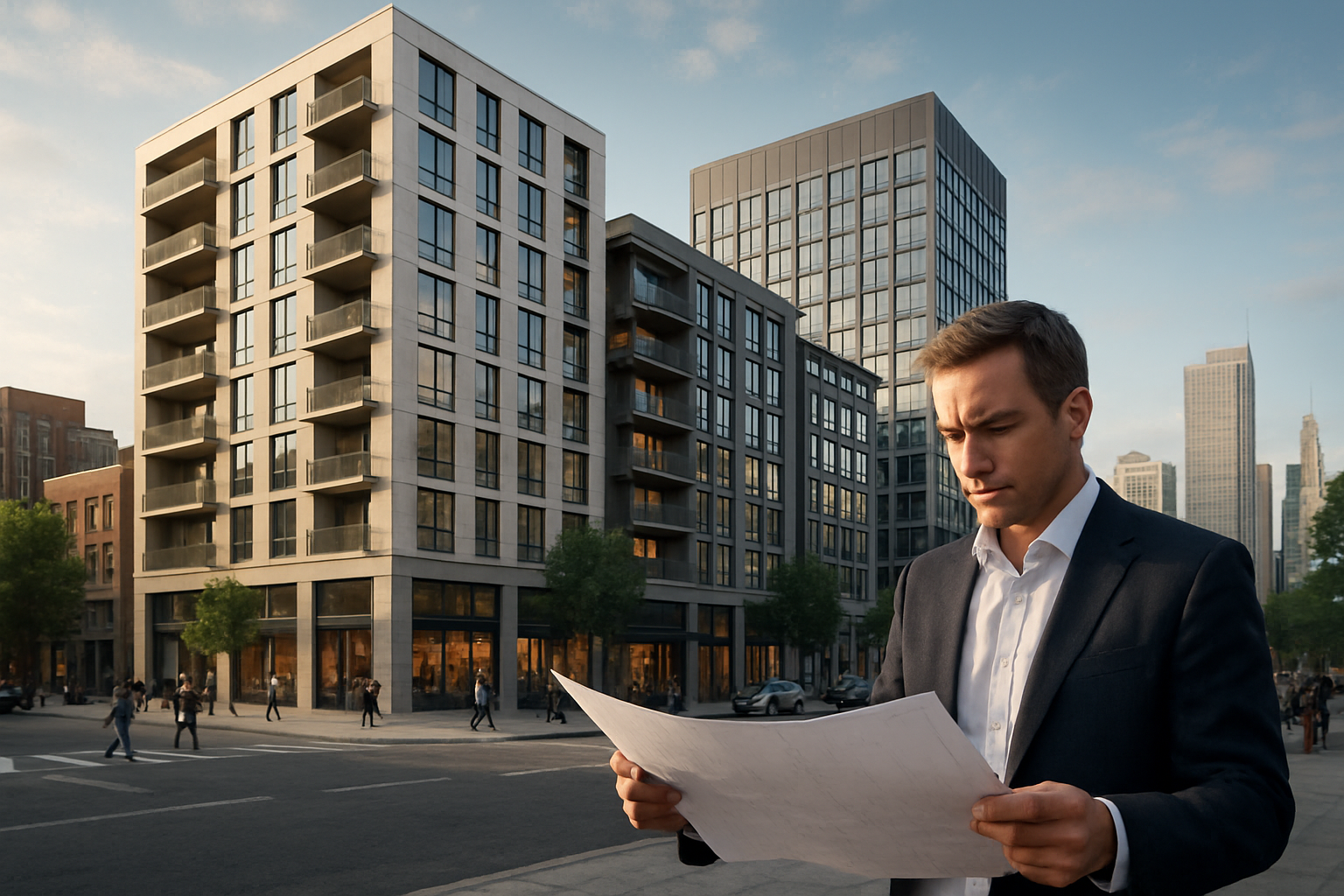Adaptive Reuse: Transforming Commercial Spaces into Residential Gems
Introduction: In an era of urban revitalization and housing shortages, adaptive reuse has emerged as a pioneering solution in real estate. This innovative approach involves repurposing existing commercial structures into residential properties, breathing new life into underutilized buildings while addressing housing demands. With 45% of major cities facing severe housing shortages, adaptive reuse presents a unique opportunity for investors, developers, and urban planners to reimagine the urban landscape.

The concept gained momentum in the 1960s and 1970s when preservationists began advocating for the repurposing of historic buildings. However, it wasn’t until the late 1990s and early 2000s that adaptive reuse started to be widely recognized as a viable strategy for urban revitalization and housing development. Today, it has become a cornerstone of sustainable urban planning, with cities like New York, London, and Sydney leading the charge in transforming old warehouses, factories, and office buildings into vibrant residential communities.
Economic and Environmental Benefits
One of the most compelling aspects of adaptive reuse is its economic viability. Repurposing existing structures often proves more cost-effective than new construction, particularly in dense urban areas where land is scarce and expensive. Developers can save on land acquisition costs, reduce construction timelines, and potentially benefit from tax incentives designed to encourage the preservation of historic buildings.
From an environmental perspective, adaptive reuse aligns perfectly with sustainability goals. By repurposing existing structures, this approach significantly reduces the carbon footprint associated with new construction. It minimizes waste, conserves resources, and helps preserve the embodied energy of existing buildings. Studies have shown that adaptive reuse projects can reduce energy consumption by up to 40% compared to new constructions of similar size and function.
Challenges and Considerations
While adaptive reuse offers numerous benefits, it also presents unique challenges. One of the primary hurdles is navigating complex zoning regulations and building codes. Many commercial buildings were not designed with residential use in mind, which can lead to issues with natural light, ventilation, and spatial layout. Developers must work closely with architects and city planners to ensure that converted spaces meet all residential standards and safety requirements.
Another significant consideration is the preservation of historical and architectural integrity. Many buildings targeted for adaptive reuse have historical or cultural significance. Balancing the need for modern amenities with the desire to maintain the building’s character requires careful planning and often involves collaboration with historical preservation societies.
Market Demand and Target Demographics
The demand for adaptive reuse projects is driven by changing lifestyle preferences, particularly among millennials and young professionals. These demographics often seek urban living experiences that combine historical charm with modern conveniences. Converted lofts, warehouse apartments, and repurposed industrial spaces appeal to those looking for unique living environments with character and a sense of history.
Moreover, adaptive reuse projects often contribute to the creation of mixed-use neighborhoods, fostering a sense of community and reducing the need for long commutes. This aligns well with the growing preference for walkable, amenity-rich urban environments. As a result, properties developed through adaptive reuse often command premium rents and sale prices, making them attractive investments for real estate developers and investors.
Case Studies and Success Stories
Numerous success stories highlight the potential of adaptive reuse in transforming urban landscapes. One notable example is the Ponce City Market in Atlanta, Georgia. This former Sears, Roebuck & Co. distribution center, built in 1926, was transformed into a mixed-use development featuring residential lofts, office spaces, and a food hall. The project not only preserved a historic landmark but also became a catalyst for neighborhood revitalization.
In New York City, the conversion of the Woolworth Building’s upper floors into luxury residences showcases how even iconic skyscrapers can be repurposed to meet changing market demands. The project retained the building’s Neo-Gothic architecture while creating some of the most sought-after residential spaces in Lower Manhattan.
These examples demonstrate how adaptive reuse can create unique living spaces that resonate with modern urban dwellers while preserving architectural heritage and contributing to sustainable urban development.
Future Trends and Opportunities
As cities continue to evolve and the demand for urban housing persists, adaptive reuse is poised to play an increasingly important role in real estate development. The COVID-19 pandemic has accelerated this trend, with many companies downsizing their office spaces and creating opportunities for residential conversions in prime urban locations.
Looking ahead, we can expect to see more innovative approaches to adaptive reuse, including the conversion of retail spaces, hotels, and even parking structures into residential units. Technologies like modular construction and advanced building information modeling (BIM) are making these conversions more efficient and cost-effective.
For investors and developers, adaptive reuse represents a unique opportunity to capitalize on underutilized assets while contributing to urban revitalization and sustainability efforts. As cities implement policies to encourage such developments, the potential for profitable and impactful projects in this space is likely to grow.
In conclusion, adaptive reuse stands at the intersection of preservation, innovation, and sustainability in real estate. By reimagining the potential of existing structures, this approach offers a powerful tool for addressing housing needs, revitalizing urban areas, and creating unique living spaces that appeal to modern sensibilities. As the real estate industry continues to evolve, adaptive reuse will undoubtedly play a crucial role in shaping the cities of tomorrow.





